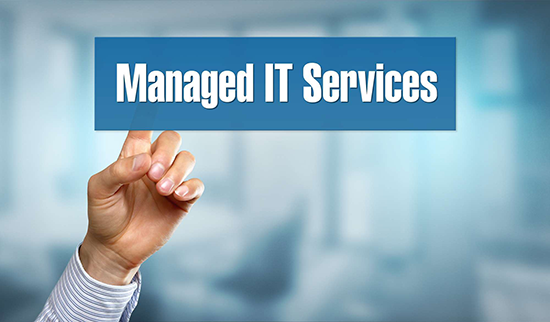What is a managed IT service? This type of solution allows organizations to delegate their IT operations to a third-party provider. MSPs are responsible for the business’ IT networks, as agreed upon in a Service Level Agreement (SLA). They provide monitoring, issue resolution, and reporting 24 hours a day, 7 days a week.
MSPs charge a flat fee for the delivery of their services depending on the number of your endpoints, the size of your company, as well as the services that you wish to get. The SLA defines exactly what services will be supplied, the degree they will be offered, and the metrics to measure their success.
History of Managed IT Services
During the early years of enterprise computing, information technology services and management was done following the break/fix model. This means that a technician only fixes computer systems when they are malfunctioning.
However, as time went on, computer manufacturing became large scale, leaving the small IT providers to focus less on manufacturing and more on break/fix. This system was time consuming, labor intensive, and expensive. It did not allow the technician to grow their business or take new clients without investing on new infrastructure and hiring new employees.

As computing devices grow annually, the gap between break/fix technicians and the amount of computers they are able to service becomes wider. Because of this, managed IT services crop up to meet this need. They bring a proactive approach to IT, conducting maintenance and upgrades, system monitoring, as well as issue resolution with the objective of preventing problems before they even start.
With the help of cloud computing and automation, MSPs were able to deliver more efficient processes while consolidating resources. They have allowed managed IT services to go beyond the boundaries that would otherwise limit their capabilities. These features allow managed IT services to scale at a much higher and faster rate than in-house IT operations or break/fix providers.
What is IT Automation?
IT automation is powered by a set of tools and technologies that perform repetitive IT tasks. These pieces of software perform activities that are typically done by humans. Some examples of the tools that automate IT processes include RMM (remote monitoring and management), PSA (professional services automation), CRM (customer relationship management), helpdesk, and remote support.
IT automation plays a significant role in proactive service delivery, helping companies provide faster, more effective solutions to clients. Adapting this has become more and more common among businesses as a way to save time and increase accuracy, among other things.
Regardless of the services you offer, whether internal IT or managed IT services, it’s ideal to augment your organization with automated tools.
Benefits of IT automation
Employees can lose a lot of time doing repetitive tasks like data entry and processing. However, these things could easily be automated. IT automation removes the need for techs to spend hours generating tickets, configuring application frameworks, and performing other tedious tasks. As a result, the team will be able to focus on higher-priority projects. Although this will likely come as a relief to your workers, the benefits don't stop there.
By automating routine tasks, the team will be able to handle more work, allowing you to take on more clients while reducing the need for additional staff. To put it another way, IT automation allows you to do more with less.
Weekly billing of technology professionals who use IT automation averages in the 40- to 100-hour range. This indicates that the automation program performs that many hours of human labor each week. In terms of full-time equivalents, that translates to one to two and a half full-time employees. The automation system, unlike workers, works at a fixed expense and never takes vacations or sick days.
Another advantage of IT automation is that it provides you with peace of mind. It's difficult to hand over all of your IT duties to an employee and trust that they'll get the job done without issues. You might feel compelled to remind them or check in on them on a regular basis to see how they're doing, which may take time. All of that is handled by IT automation, so you can focus on what you do best.
Automated systems manage everything from a single dashboard, allowing for better organization and cross-departmental visibility. You'll be able to get all the details you need in one place easily.
Final Thoughts
We're not saying that IT automation should take the place of human workers. But it cannot be denied that having it can help employees do their work more effectively and accurately. It challenges the limits of what your team is capable of. Do you want to get the benefits of automation as well? Contact ITarian to get a great deal of IT services.